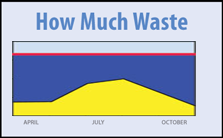Urban Green Space Makes People Happier Than Money
As much as cities can be drivers of economic and social growth, sometimes it’s downright stressful to live amid the hustle and bustle of today’s urban centres. To escape this stress, many urban residents take refuge in green public spaces, such as parks and nature reserves.
While the concept that urban green space benefits physical and mental health may be intuitive, two recent studies have taken a more scientific look at the health impacts of access to urban green space.
A study from the University of Wisconsin found that, on average, residents claim to be happier the more green space is located in their neighbourhood. The study drew conclusions from a statewide public health survey of more than 2,500 residents in 229 towns and cities, who answered questions on the levels of depression, anxiety and stress. The responses were then examined against an index of the vegetation per square mile in their neighbourhood.
The most striking finding is that happiness was more strongly correlated to green space than socio-economic status.
Participants living on blocks with 10% fewer green areas than the average were more likely to report stress and depression. Following this logic, a ‘poor’ resident living in an area with more trees and open space would be happier than a ‘rich’ resident living in an area without access to green space.
Another study, by the University of Exeter in England, used 18 years of survey data from over 10,000 participants across the United Kingdom. Its analysis shows a strong correlation between access to green space, self-reported well-being, and even physical health.
The researchers even found that the sensations associated with living close to green space yield similar feelings and levels of satisfaction to getting a new job or getting married.


